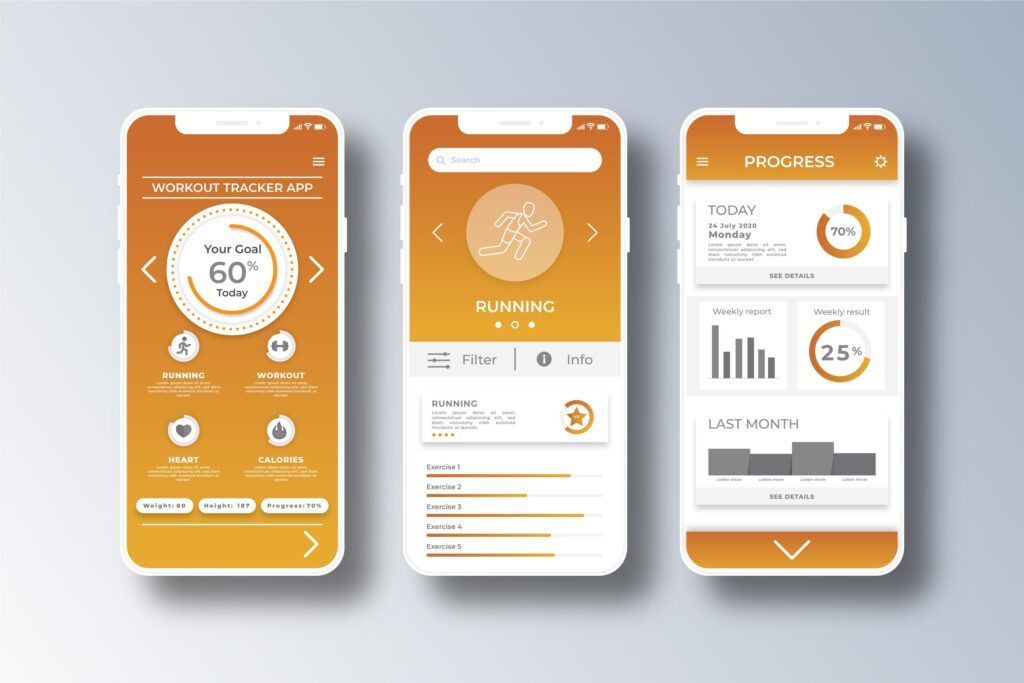The digital landscape has undergone a seismic shift in recent years. Mobile design has become the primary gateway to the internet for billions of users worldwide. As of 2025, mobile-first design isn’t just a trend—it’s a necessity. Businesses and designers must prioritize mobile-first strategies to ensure seamless user experiences and stay competitive in a mobile-dominated world. In this blog, we’ll explore why mobile-first design is crucial in 2025 and how it can drive success in the digital age.
The Rise of Mobile-First Internet Usage
The statistics speak for themselves: mobile devices account for over 60% of global internet traffic in 2025. People use their smartphones for everything, from shopping and socializing to banking and entertainment. Key reasons for this shift include:
- Accessibility: Smartphones are affordable and portable, making them a preferred choice for accessing the internet.
- Global Reach: Emerging markets, where mobile devices are more accessible than desktop computers, have contributed significantly to this trend.
A mobile-first approach ensures that websites and apps cater to this growing audience, providing a smooth and intuitive experience.
Improved User Experience (UX)
Mobile-first design focuses on creating a user experience tailored to smaller screens. This approach prioritizes simplicity, functionality, and responsiveness. Here’s how it enhances UX:
- Streamlined Content: Designers focus on delivering only essential information, avoiding clutter.
- Faster Load Times: Mobile-first designs prioritize lightweight elements, reducing loading delays.
By putting mobile users at the forefront, businesses can ensure higher engagement, reduced bounce rates, and increased conversions.
Google’s Mobile-First Indexing
Google has fully adopted mobile-first indexing, meaning that it evaluates the mobile version of a website first when determining search rankings. In 2025, this practice is more critical than ever for SEO success. Key implications include:
- Higher Rankings: Websites optimized for mobile-first design are more likely to rank higher in search results.
- Improved Crawlability: Mobile-friendly sites are easier for Google’s bots to crawl and index.
Failing to adopt mobile-first design can result in poor search engine rankings, reducing visibility and traffic.
Meeting E-Commerce Expectations
Mobile commerce, or m-commerce, has become a dominant force in the retail industry. As consumers increasingly rely on smartphones to shop online, businesses must adapt to meet their expectations. Here’s why mobile-first design matters in e-commerce:
- Seamless Checkout: Optimized forms and payment gateways simplify the buying process.
- Personalized Experiences: Mobile-first designs integrate AI-driven recommendations and user preferences.
A mobile-friendly e-commerce platform can boost sales, reduce cart abandonment, and build customer loyalty.
The Growth of Progressive Web Apps (PWAs)
Progressive web apps (PWAs) are revolutionizing the way users interact with websites. They combine the best of both worlds: the functionality of a mobile app and the accessibility of a website. Mobile-first design is at the core of PWA development, offering:
- Offline Access: Users can interact with the app even without an internet connection.
- Push Notifications: Businesses can engage users with timely updates and promotions.
By embracing mobile-first design principles, businesses can leverage the full potential of PWAs to reach a wider audience.
Catering to Voice Search
Voice search is rapidly gaining popularity, with users relying on digital assistants like Siri, Alexa, and Google Assistant. Mobile-first design supports voice search optimization by:
- Prioritizing Local SEO: Mobile users often search for location-based services.
- Creating Concise Content: Voice search queries are typically conversational and require direct answers.
Adopting mobile-first strategies ensures that businesses remain relevant in the voice-first era.
Staying Competitive in a Mobile-Driven World
In 2025, businesses that fail to prioritize mobile-first design risk falling behind their competitors. A poorly optimized mobile experience can lead to:
- Lost Customers: Frustrated users are unlikely to return to a site that doesn’t meet their expectations.
- Negative Brand Perception: A subpar mobile presence reflects poorly on a brand’s reputation.
Investing in mobile-first design is no longer optional—it’s essential for survival and growth in the digital age.
Future-Proofing Your Digital Strategy
As technology continues to evolve, mobile-first design provides a strong foundation for adapting to future trends. Whether it’s augmented reality (AR), virtual reality (VR), or 5G connectivity, a mobile-first approach ensures compatibility with emerging technologies.
Businesses that adopt mobile-first design today will be better positioned to capitalize on future innovations and market opportunities.
Conclusion
Mobile-first design is no longer just a best practice; it’s a critical strategy for success in 2025. By prioritizing mobile users, businesses can enhance user experiences, improve SEO rankings, and stay ahead of the competition. As the digital world becomes increasingly mobile-centric, adopting a mobile-first approach ensures long-term relevance and growth in an ever-evolving landscape.












